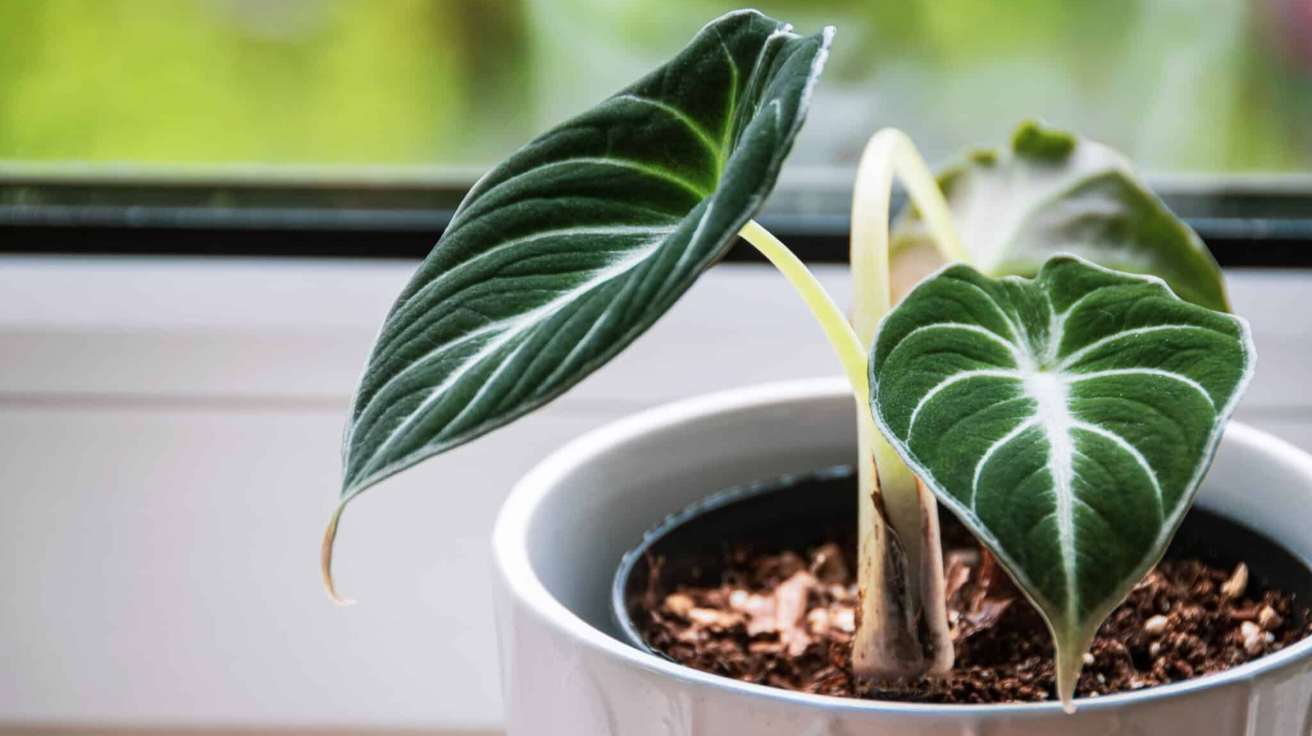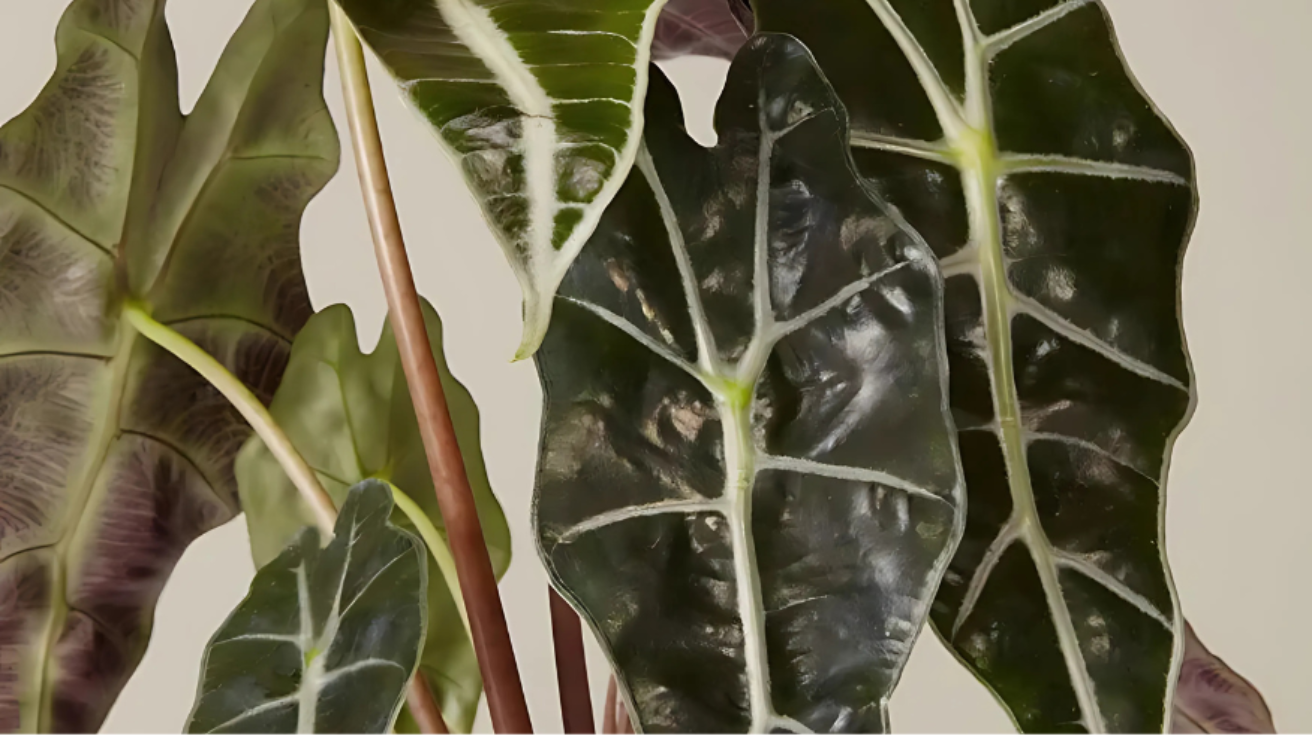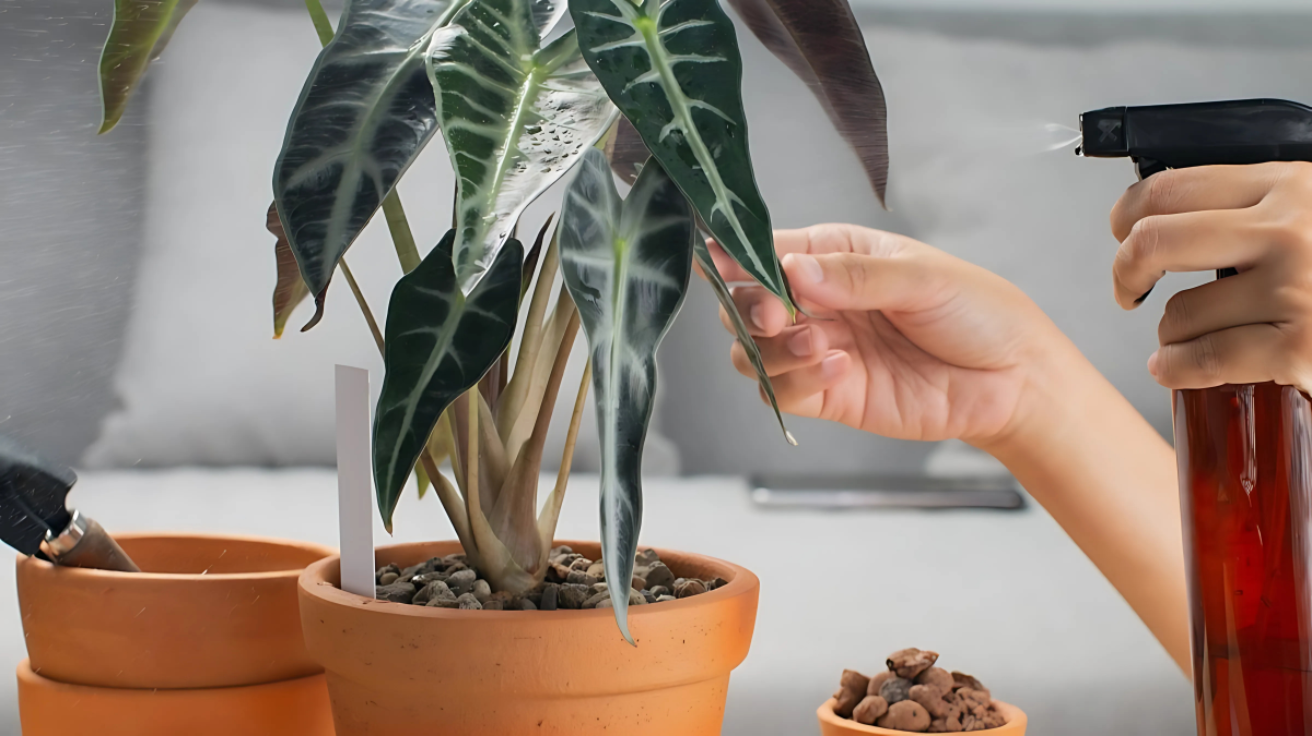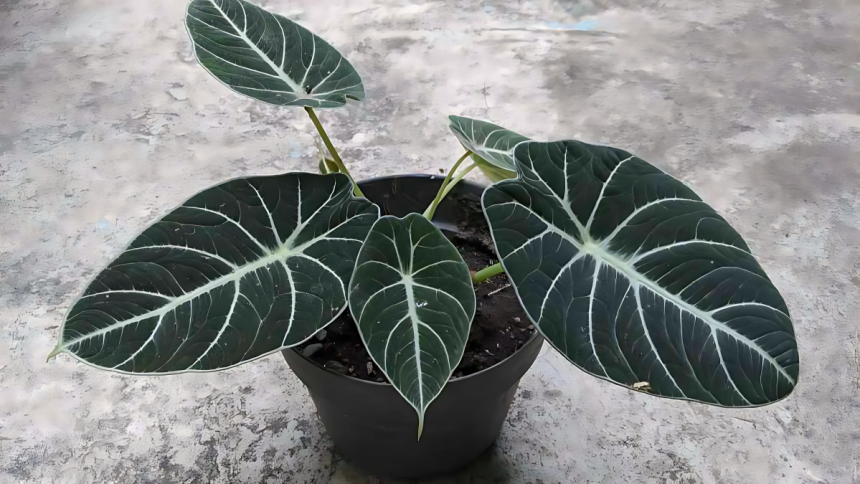Looking for a plant that makes guests stop in their tracks and say “wow” every time they visit? The Black Velvet Alocasia might be exactly what your home needs to stand out!
With its deep black leaves that feel like soft velvet, this plant stands out from the usual greenery most people have. It’s like having a piece of art that grows!
Black Velvet Alocasia (or Alocasia reginula) is nicknamed the “little queen” – and for good reason. Despite its small size, it has a royal presence that can turn any boring corner into something special.
Even better, this plant doesn’t demand too much attention. With some basic care, it will thrive and become a talking point in any room. Ready to add some drama to your plant collection?
Let’s learn all about this beautiful houseplant!
Key Features of Black Velvet Alocasia
The Black Velvet Alocasia, with its striking appearance and minimal maintenance needs, is an excellent choice for indoor plant enthusiasts.
It thrives in specific conditions, making it important to understand its care requirements to ensure it flourishes in your home. Below is a detailed overview of the key features and care needs of this beautiful tropical plant.
| Feature | Description |
|---|---|
| Plant Type | Tropical, perennial plant with striking ornamental foliage. |
| Leaf Appearance | Deep green, velvet-like texture with prominent, silver veins. |
| Size | Compact size, typically growing 1–2 feet tall, ideal for small indoor spaces. |
| Growth Habit | Slow-growing and low maintenance, ideal for plant owners with busy schedules. |
| Lighting | Prefers bright, indirect light; avoid direct sunlight to prevent leaf burn. |
| Temperature | Thrives in temperatures between 65°F and 80°F (18°C–27°C), not tolerant of frost. |
| Watering | Water when the top inch of soil feels dry; avoid overwatering to prevent root rot. |
| Humidity | Prefers high humidity (60% or more); can be placed on a humidity tray or misted. |
| Pests Resistance | Generally pest-resistant but may occasionally attract spider mites and aphids. |
| Lifespan | Can live for several years with proper care, becoming a long-term indoor companion. |
This table gives you a comprehensive understanding of what the Black Velvet Alocasia needs to thrive in your home, ensuring it remains a healthy addition to your indoor space.
Ideal Environment for Black Velvet Alocasia

To ensure that your Black Velvet Alocasia flourishes, it’s essential to create the right environment that mimics its native tropical habitat. Below are the key factors to consider when setting up the ideal environment for this plant.
Lighting Needs
The Black Velvet Alocasia thrives in bright, indirect light. Direct sunlight can scorch its delicate leaves, causing them to become discolored. If the plant doesn’t receive enough light, it may become more susceptible to pests and diseases.
It’s best to place the plant near a window with filtered light or in a well-lit room where it can receive plenty of light without being exposed to harsh sun rays.
If natural light is limited, consider supplementing with a grow light to ensure the plant gets the energy it needs to grow strong and healthy. Keep in mind that insufficient light can lead to dull foliage, so adequate light is crucial.
Temperature and Humidity
This plant prefers warm temperatures ranging from 65°F to 80°F (18°C to 27°C). It is sensitive to temperature fluctuations, so avoid placing it near drafty areas.
Additionally, Black Velvet Alocasia thrives in high humidity, ideally around 60% or higher. To maintain this, you can place the plant on a humidity tray, mist the leaves regularly.
Inadequate humidity levels can cause the leaves to dry out and lose their lush appearance. A consistent environment will encourage the plant’s vibrant foliage and healthy growth.
Soil Type
For optimal growth, the Black Velvet Alocasia requires well-draining soil. It prefers slightly acidic soil with a pH level between 5.5 and 6.5.
A tropical plant potting mix or a mix designed for orchids works well, as it ensures proper drainage and helps prevent waterlogging, which can lead to root rot.
Providing these ideal conditions will help your Black Velvet Alocasia thrive and maintain its beautiful, velvety leaves. Additionally, using a mix that retains just the right amount of moisture will keep the roots hydrated.
Common Problems and Solutions for Black Velvet Alocasia

Black Velvet Alocasia, like many indoor plants, may encounter a few common problems that can affect its health. Understanding the causes and knowing how to address them can help keep your plant thriving.
1. Pests and Diseases
Black Velvet Alocasia is susceptible to several pests and diseases, including:
- Spider Mites: These tiny pests often create webs on the undersides of leaves. To treat spider mites, gently wipe the affected leaves with a damp cloth, and apply insecticidal soap or neem oil.
- Mealybugs: Mealybugs appear as small, white, cotton-like clusters on the plant. Treat them by using insecticidal soap or a cotton swab dipped in rubbing alcohol to remove them from the leaves.
- Aphids: These pests suck the sap from leaves, causing them to curl and distort. Use a gentle spray of water to dislodge aphids or apply an insecticidal soap.
Solution: Regularly inspect your plant for pests and diseases. Treat infestations promptly with safe, natural remedies like neem oil or insecticidal soap, and always ensure your plant has proper drainage to prevent root rot.
2. Yellowing Leaves
Yellowing leaves on Black Velvet Alocasia can result from several factors:
- Overwatering or Underwatering: Consistent moisture is key, but overwatering can lead to root rot, while underwatering can cause dehydration. Make sure to let the top inch of the soil dry before watering again.
- Nutrient Deficiency: A lack of essential nutrients, especially nitrogen, can cause leaves to yellow. To correct this, feed your plant with a balanced fertilizer every 4-6 weeks during the growing season.
- Low Light: Insufficient light can cause the plant to become stressed, resulting in yellowing leaves. Ensure the plant is placed in a spot that receives bright, indirect light.
Solution: Adjust your watering routine based on the plant’s needs, provide adequate light, and fertilize regularly to prevent nutrient deficiencies. If yellowing persists, check for any signs of pests or diseases that may be affecting the plant.
Caring Tips for The Black Velvet Alocasia

By following these tips, your Black Velvet Alocasia will thrive and maintain its velvety leaves.
- Watering: Keep the soil consistently moist but not waterlogged. Water when the top inch of soil feels dry, and ensure proper drainage.
- Humidity: Use a humidity tray, mist the leaves, or use a humidifier because they thrive in high humidity.
- Temperature: Maintain a warm environment with temperatures between 65°F to 80°F (18°C to 27°C). Avoid cold drafts and temperature fluctuations.
- Light: Provide bright, indirect light. Avoid direct sunlight as it can scorch the leaves.
- Soil: Use well-draining, slightly acidic soil, such as a tropical plant or orchid mix. Ensure the pot has good drainage.
- Fertilization: Feed with a balanced liquid fertilizer every 4-6 weeks during the growing season (spring and summer). Reduce feeding in the fall and winter.
- Pruning: Remove yellow or dead leaves to maintain a tidy appearance and encourage new growth. Handle gently to avoid damaging the plant.
It’s a Wrap!
The Black Velvet Alocasia brings something special to indoor spaces that few other plants can match. Its velvety dark leaves create a bold statement while remaining compact enough for any home.
Though it needs a bit more care than some common houseplants, the extra attention pays off with its striking appearance and healthy growth.
Remember to keep it in bright indirect light, and maintain humidity, and water carefully. Each Black Velvet Alocasia has its own personality and will respond to the specific conditions in your home.
As plant trends come and go, this little queen remains a favorite for good reason. Its distinctive beauty and unique look continue to charm plant lovers everywhere.
Ready to bring this touch of natural beauty into your home? Your plant collection will thank you!

